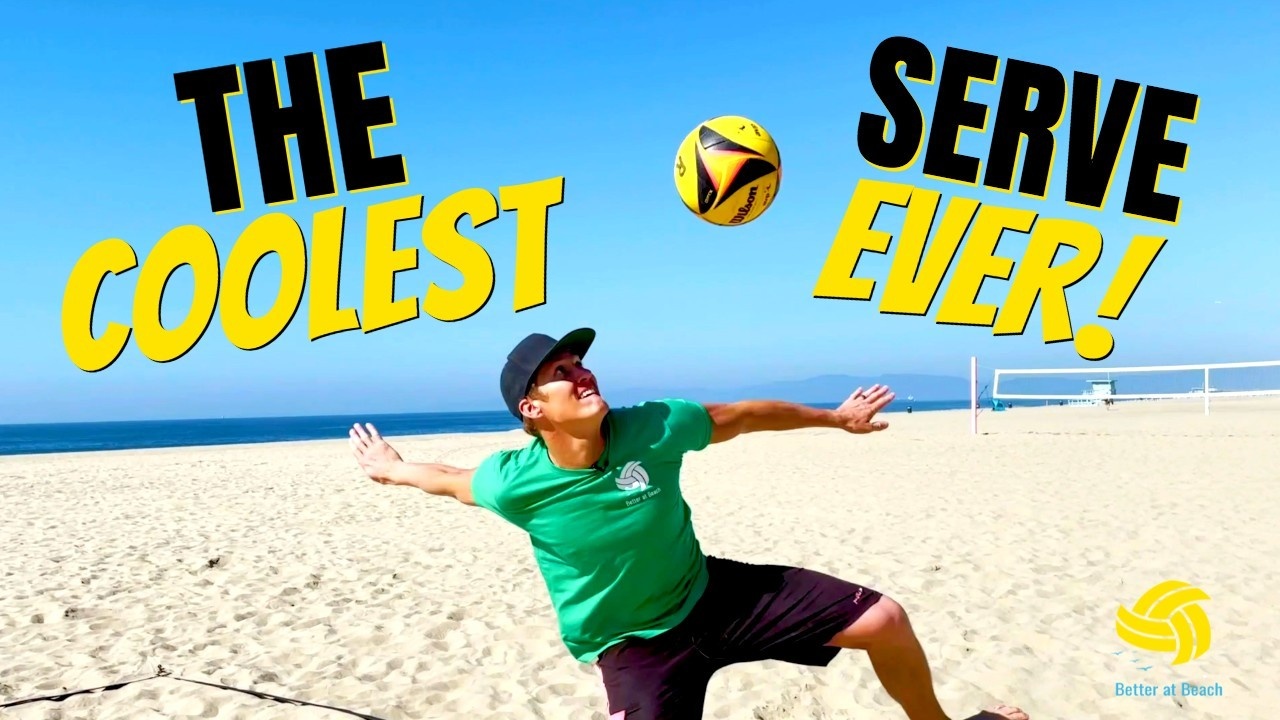
The COOLEST Volleyball Serve EVER! (How to Serve a Skyball)
The world’s reaction to the skyball serve when it got its first true glimpse of it, at the Rio Olympic Games in 2016, was as you might expect: A blend of amusement, confusion, misunderstanding, and viral videos.
The casual viewer of beach volleyball didn’t understand why a serve hit straight into the air – by Adrian Carambula, in this case – was proving so difficult to pass. On the ESPN Show, Pardon the Interruption, Tony Kornheiser called it a middle school serve. It was a joke, a gimmick, a cute thing this diminutive Italian player did.
It is, in actuality, when done correctly, one of the deadliest serves in beach volleyball.
But why is the skyball serve so effective? And, more important, how do we even hit a skyball?
If you’re reading this article on the skyball serve, you’ve likely tried it, or have had a friend who’s tried it. Chances are, you’ve hit it backwards, sideways, a full football field long. Maybe you've even whiffed once or twice (worry not, we're all guilty). On the off-chance you did hit a skyball serve in bounds, it was probably as easy to pass as a free ball.
So why is Adrian Carambula’s skyball so deadly? Why is he likely the front-runner for the FIVB Server of the Year? Why, in Cancun, did he have players literally falling over attempting to pass his skyball serve?
Because he’s the best in the world at a difficult skill – a skill few, at any level, possess. That’s part of the reason hitting a skyball can be so dangerous: Hardly anybody hits it, so hardly anybody practices against it.
“It helps change the rhythm of the other team’s offense,” said AVP professional beach volleyball player Mark Burik, who has a deadly skyball of his own. “It’s such a rare serve that the other team doesn’t have a lot of practice on it, so you get a bonus then. But you’re also changing the rhythm. We can change up their rhythm and they have to feel a different offense based on our change in serve.”
In regards to making an approach and attacking, there is no more disruptive serve than the skyball. Because of the immense amount of spin on the ball, the pass will usually be pulled back well off the net. This will move the setter, who has been patiently waiting for the skyball to come back to Earth from whatever planetary orbit it was briefly in, back and maybe sideways. Oftentimes, the passer actually has to get out of the way of his own pass for the setter to set, which causes all manner of havoc for the approach.
The skyball makes a wondrous mess of things.
All of this, however, can only occur if you are adept at serving the skyball. This is no easy task.
“The skyball is a pretty showy serve and it takes a lot of practice to hit it effectively and consistently,” Mark Burik said. “It’s going to disrupt a team’s offense, it’s going to allow you to hit a serve they don’t usually see, and it’s going to give you some time to set up when you’re on defense.”
Want to show your support and help us make more content? Buy a cool beach volleyball
 |
 |
|---|---|
| Premium Tank Top | Mikasa BCSPSH Ball Cart |
So: How can we serve the skyball well?
Like anything, it takes a lot of practice – and a lot of looking stupid. This is a serve in which your misses are very public, and often very egregious. Even Adrian Carambula, Mr. Skyball himself, will sometimes hit a ball 80 feet in the wrong direction. Such is the downside of the skyball. But the upside is tremendous.
As you can see in the video above, Carambula puts an obscene amount of spin on the ball. He can spin it with the wind as well as against. He can spin it sideways, creating a hooking movement that forces the passer to track and track and track the ball. Some teams, like Poland’s Piotr Kantor and Bartosz Losiak, have resorted to having one of the players simply standing at the net while the passer – Losiak in this case – runs around, tracking the ball.
To put that amount of spin on the ball, it helps to create pre-spin, flicking it with your opposite hand. Your dominant hand will then dip down and swing up at the ball, clipping it on the back side to create the top spin we’re looking for. This top spin will then team up with gravity to bring the ball hurtling back towards the earth at a greater speed and different trajectory than could have been anticipated by the passer.
This is the most common type of skyball these days, though there is also the float skyball, the signature touch of Sinjin Smith. Rather than toss the ball with spin and add more to it, he’d simply squat down and pop it up with his fist, hitting it as high as he can. If you can find any film of Smith at the 1996 Olympic Games, you’ll see how deadly it was.
No matter what type of skyball serve you’re attempting to hit, be it the Adrian Carambula spinning serve, or Sinjin Smith’s float serve, you’ll need practice, and repetition. It’s a fun serve to hit, and, as Mark Burik said, a showy one.
But if you can master it, well, enjoy the aces – and the laughs that come with it.
***
Join our email list and Get your FREE Drill Book > www.betteratbeach.com/freebeachvolleyballdrillbook
If you want to get more power, more accuracy, more consistency and MORE ACES as well as the defensive mindset and strategies that win matches, you should sign up for our Beach Volleyball Mastery. We take you through the basic mechanics of serving and then work all the way up to advanced tactics and how to beat certain types of hitters and teams. Keep the other team on their heels and never give them a chance to get a comfortable attack
We also show you how to use the various types of standing float serves as well as jump floats, jump spikes and skyballs! Each serve should be used against certain types of players! Once inside the membership, you’ll be able to unlock “Power, Accuracy and Aces: The Serving Master Class” which will build you an arsenal of more strategic, more accurate, more powerful serves from the ground up. It comes complete with rehab protocol, gym exercises you need to increase arm speed, solo drills you can do at home, partner drills, accuracy exercises and elite throwing and hitting drills.
We also include with 9 more skill courses AND our 60 Day At-Home Max Vertical Jump Training Program.
Once you sign up, you'll be able to watch the in-depth tutorials, film your “before” videos, start and film your at-home drills and begin posting to our Private Facebook Group. Then, our coaches will break down your mechanics and spacing and timing at our weekly online meetings. Yes, that means we look at YOUR videos and we coach YOU!
Facebook Group CTA VolleyChat! Get Better at Beach Volleyball for posts about common questions/ problems > https://www.facebook.com/groups/betteratbeach
SIGN UP NOW AND LEARN HOW TO WIN FROM THE PROS.





